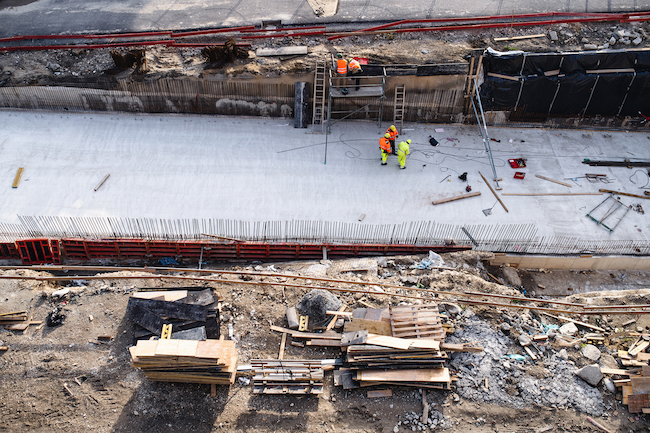
A contractor’s ability to anticipate site conditions is critical to the success of any construction project. Indeed, the cost of the work provided for in the construction contract is typically predicated (at least in part) upon certain assumptions made by the contractor about site conditions at the project. These assumptions are usually based upon the contractor’s own verification of conditions or upon information provided to it by the owner (and in some cases, both). Furthermore, the costs associated with discovering unanticipated site conditions can be significant, particularly where the scope of the problem is widespread. It is, therefore, not surprising disputes over unanticipated site conditions are common in the construction industry.
Based on the considerable expense that can be incurred as a result of an unanticipated site condition, it is common for owners to incorporate exclusionary provisions into their construction contracts that prevent contractors from relying upon the geotechnical reports or other site condition information provided to the contractor by the owner.
As a rule, the courts have upheld these exclusionary provisions, particularly in circumstances where it would be relatively simple for the contractor to perform its own verification of owner-supplied geotechnical reports. The New Brunswick Court of Appeal decision, Brad Gould Trucking & Excavating Ltd. v. Bird Construction Co, 2015 NBCA 47 highlights the importance of this verification exercise. In Brad Gould, the Province of New Brunswick retained Bird Construction to construct a courthouse in Saint John. Pursuant to the construction contract, Bird was provided with a geotechnical report prepared by the Province’s engineer. Based upon Bird’s understanding of the information in the geotechnical report, it concluded that it could remove all of the subsurface materials by digging. Shortly after commencing the work, Bird discovered that it would need to use a hydraulic breaking machine at considerable expense to remove certain of the subsurface materials. The evidence before the Court of Appeal disclosed that the geotechnical report had properly described the subsurface materials and that a digging technique could not be used to remove some of those materials. Bird’s evidence was that it had not engaged a third party engineer to review and the Province’s geotechnical report because the expense associated with such an engagement would only have served to significantly increase the value of Bird’s bid and ultimately would have increased the Province’s costs. The Court of Appeal rejected this argument, holding that Bird had an obligation to ensure it understood the geotechnical information provided to it. The Court further commented that discharging this obligation would not have been unduly onerous in the circumstances as it would have simply required Bird to engage a third party engineer to review and compare the geotechnical report to Bird’s bid.
There are, however, exceptions to the general rule. For example, in Trident Construction Ltd. v. W.L. Wardrop & Associates Ltd., 1979 CarswellMan 116, the Manitoba Court of Queen’s Bench held that a contractor is not required to completely re-work an owner’s engineer’s design in the course of verifying that design, even where an exclusionary clause in the contract requires the contractor to be entirely responsible for understanding the site conditions. In Trident, the contractor entered into a contract with the City of Winnipeg for the construction of a sewage disposal plant. The city had also entered into an engineering contract for the supervision of the construction. The engineers designed the plant using information from other experts who had extensively researched the problems typically encountered when designing and constructing a sewage disposal plant. Two of the known problems with this type of construction related to concrete buildings that had to be built below the water table and large sections of concrete that had to be joined with a material that would allow the sections of concrete to expand or shrink, but would still allow the system to be waterproof. During the course of construction, the contractor discovered the height of the water table as determined by the engineer’s report did not take into account seasonal fluctuations and that the material chosen to fill the joints between the sections of concrete was unfit as the material would not be able to prevent leaking. The seasonal fluctuation issue had been addressed in one of the expert’s reports that was relied upon by the engineers, but this information had not been passed onto the contractor or its subcontractor. The contractor’s correction of these issues delayed the project by several months. The owner penalized the contractor for the delay, relying upon a provision in the contract that required the contractor to be entirely responsible for understanding the problems involved with the construction.
The Court in Trident found largely in favour of the contractor, commenting that in many cases, an owner will retain an engineer that will take many months researching and preparing the plans and specifications involved in a project for which they are paid substantial sums. On the other hand, contractors are only given a few weeks to prepare and to submit a competitive bid for the construction of the project based on those comprehensive plans and specifications. In this timeframe, it is impractical for any building contractor to independently and comprehensively verify the plans, specifications and addenda that are issued for the bid. In the result, the Court held that despite the exclusionary clause, the contractor was entitled to rely upon the site condition information prepared by the owner’s engineer in the circumstances.
While it is not entirely clear where the courts will draw the line and uphold an exclusionary clause that prevents a contractor from relying upon the information regarding site conditions provided to it by an owner, it is clear that giving a contractor insufficient time to review and verify a comprehensive set of plans and specifications prior to the bid submission will likely invalidate such an exclusionary clause. On the other hand, where verification of site conditions is possible (and presumably not unduly onerous), the court will likely uphold an exclusionary clause if there is a complete failure by the contractor to verify such information.
Erin Cutts is a lawyer at Borden Ladner Gervais LLP. This article is for information purposes only and may not be relied on for legal advice. Please send comments to editor@on-sitemag.com.
This column was first published in the April 2020 issue of On-Site. You can read the entire issue here.






